One thing you may not know about me is that I am completely fascinated with dollhouse miniatures. I find something incredibly awe-inspiring about tiny, realistic objects. My father and I built a dollhouse for some of my figurines and decorating it with miniature food and accessories was my favourite parts. Sometimes when I’m bored, I’ll just browse through online retailers and on eBay, admiring the painstaking detail put into these things.
I’m honestly not sure what put the bee into my bonnet in the first place, but I recently decided I wanted to make a traditional miniature washitsu (Japanese room) diorama, and I wanted to make as much of it from scratch as I possibly could, using found objects or bits and bobs from the dollar store. The room started out as a cardboard mailing box. I covered it with brown craft paper. The roof is more cardboard, covered with pieces of a bamboo beach mat. The tatami mats inside were made out of more beach mat, adhered to foam-core and decorated with washi tape. The wood flooring is popsicle sticks, and the screens are sheer mylar with more popsicle sticks and match sticks. They slide open and closed, too, which I am very proud of! I made the zabuton out of leftover indigo fabric from my recent sashiko project. The table is a coaster and a napkin ring, and the console is the holder for the coasters.
Most of the food and accessories are Re-Ment miniatures I already owned. The tiny bonsai I made myself, using a beads, and a bottle cap and some washi tape for the containter. The kakemono was printed and adhered to origami paper and toothpicks. The only items I purchased were the tiny geta, the vase (the pussywillows in the vase were made with wire and pearl flower pips), and the adorable little bowl of goldfish. The lighting was a happy accident; I made the two small fixtures and went looking for a small set of LEDs to light them, and found some at the dollar store that came with the adorable red lantern! I had to incorporate it!
It may not be perfect, but overall I’m so happy with how this turned out, and I suspect I will be making more dioramas like this in the future. I’d love to do a dressing room with a tiny tansu at some point!

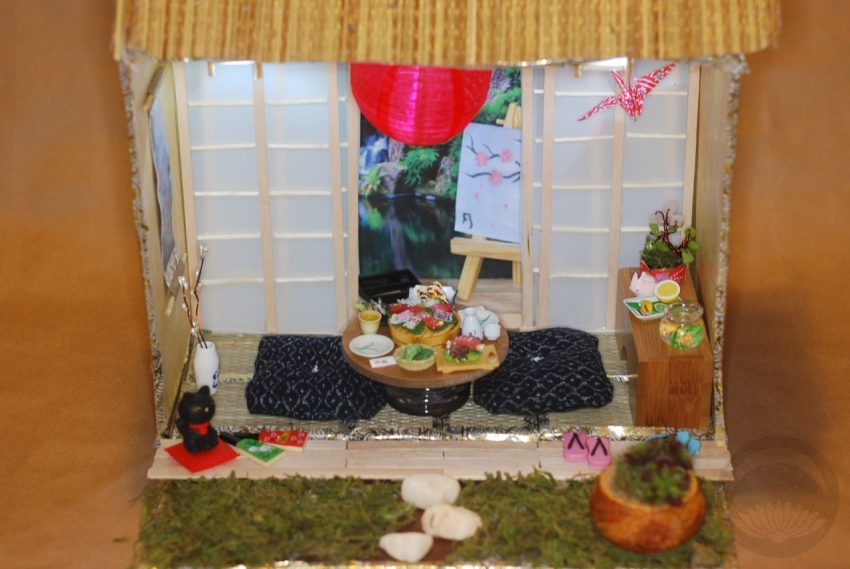

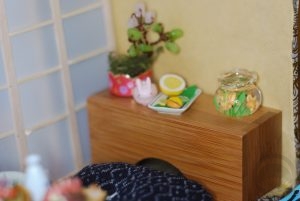
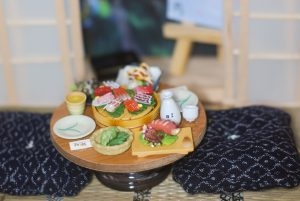

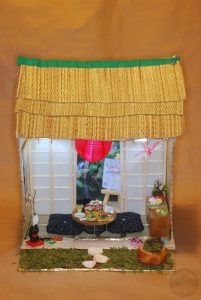
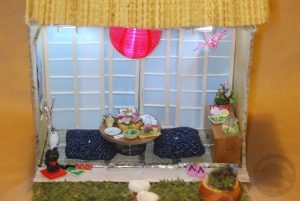
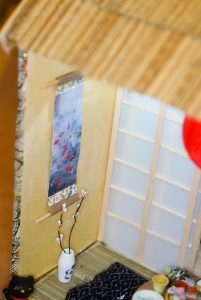
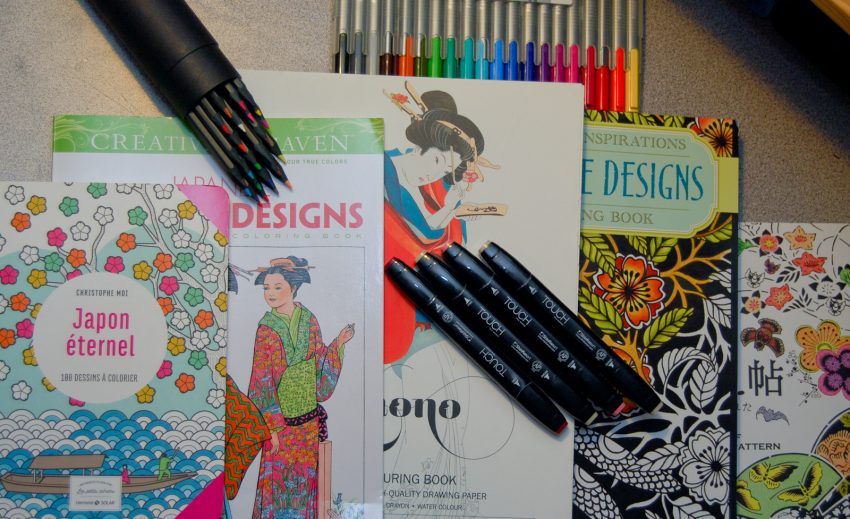
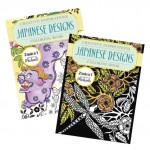
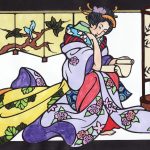


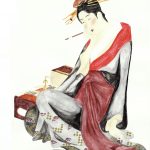
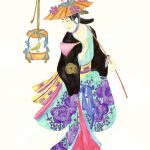

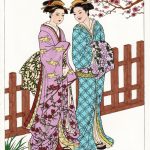
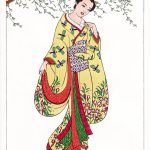
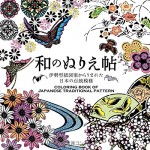
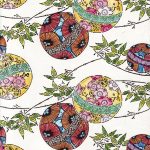

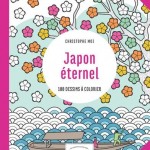
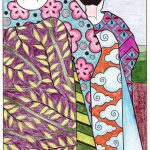
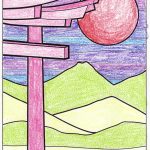

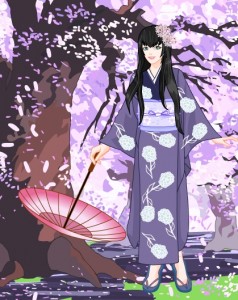

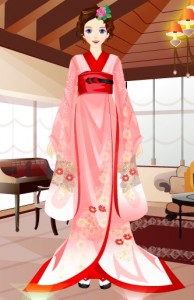
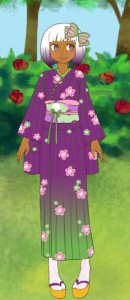
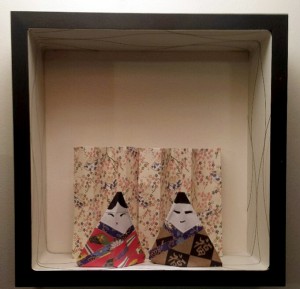
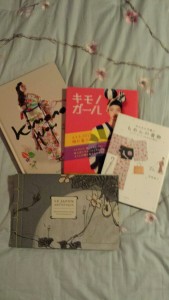
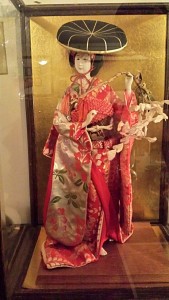

















 Bebe Taian
Bebe Taian CHOKO Blog
CHOKO Blog Gion Kobu
Gion Kobu